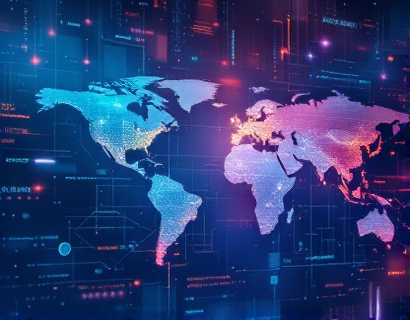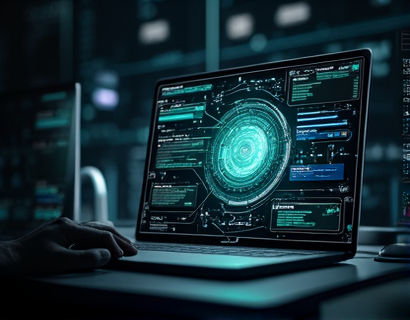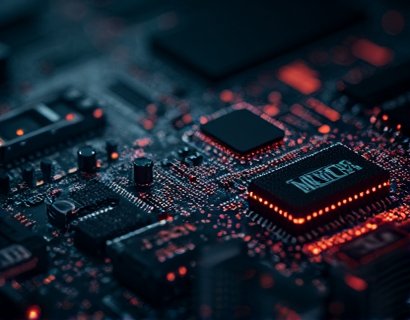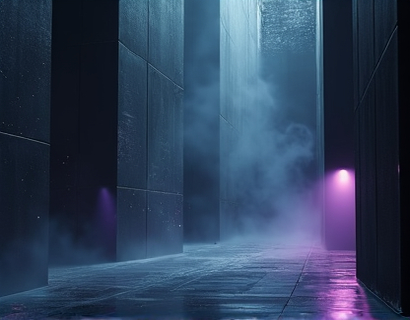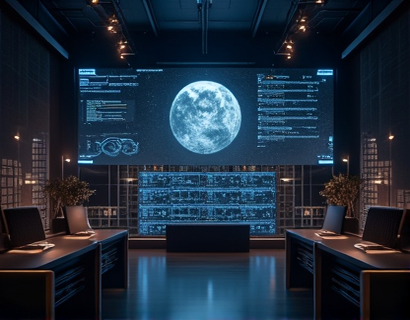Crafting Secure and Personalized Online Memorials with AI and Blockchain
The digital age has transformed numerous aspects of our lives, including how we remember and honor our loved ones who have passed away. Traditional methods of creating memorials, such as physical headstones or photo albums, are being complemented by innovative digital solutions. This article explores the integration of Artificial Intelligence (AI) and blockchain technology to craft secure and personalized online memorials, offering a unique and meaningful way to create lasting tributes for those we cherish.
In recent years, the demand for digital memorials has surged, driven by bereaved families and individuals seeking modern and flexible solutions to honor their loved ones. The need for secure, personalized, and enduring online tributes has led to the development of advanced platforms that leverage cutting-edge technologies like AI and blockchain. These platforms aim to provide a comprehensive and user-friendly experience, ensuring that the memories of the departed are preserved with the utmost care and respect.
Understanding the Need for Digital Memorials
The transition to digital memorials is rooted in the evolving preferences and needs of modern society. Traditional memorials, while cherished, have limitations in terms of accessibility, maintenance, and personalization. Digital memorials offer a solution that can be accessed from anywhere in the world, updated easily, and tailored to reflect the unique personality and life of the individual being honored.
Moreover, digital memorials can incorporate a wide range of multimedia elements, such as photos, videos, audio recordings, and written memories. This multifaceted approach allows for a more comprehensive and immersive tribute, enabling loved ones to share and relive cherished moments in a way that was previously impossible.
AI in Digital Memorials: Enhancing Personalization and Security
Artificial Intelligence plays a pivotal role in enhancing the personalization and security of digital memorials. AI algorithms can analyze and curate content, ensuring that the memorial reflects the essence of the person being remembered. For instance, AI can organize photos chronologically, identify recurring themes in written memories, and even generate personalized messages or quotes that capture the spirit of the deceased.
Security is another critical aspect where AI shines. Digital memorials must protect sensitive information and ensure that only authorized individuals can access and contribute to the tribute. AI-powered security measures, such as biometric authentication, behavioral analysis, and real-time threat detection, provide robust protection against unauthorized access and cyber threats.
Blockchain Technology: Ensuring Integrity and Longevity
Blockchain technology is renowned for its ability to create immutable and transparent records. In the context of digital memorials, blockchain ensures that the content is tamper-proof and can be preserved for generations to come. Each contribution to the memorial, whether a photo, a video, or a written message, is recorded as a block in the blockchain, creating a permanent and unalterable history.
The decentralized nature of blockchain also enhances security. Unlike traditional centralized databases, which are vulnerable to hacking and data breaches, blockchain distributes data across a network of nodes. This makes it extremely difficult for malicious actors to compromise the integrity of the memorial.
Creating a Seamless User Experience
To ensure that users can easily create and manage their digital memorials, platforms must offer an intuitive and user-friendly interface. The process should be straightforward, allowing individuals to upload content, customize the design, and invite others to contribute without requiring technical expertise.
AI can further enhance the user experience by providing guided assistance and suggestions. For example, AI-driven recommendations can suggest appropriate music, quotes, or themes based on the content uploaded by the user. This not only simplifies the process but also helps in creating a more cohesive and meaningful tribute.
Preserving Memories with Blockchain
One of the most significant advantages of using blockchain in digital memorials is the guarantee of longevity. Unlike traditional digital storage solutions that may become obsolete or inaccessible over time, blockchain ensures that the memorial remains accessible and intact for as long as the network exists.
Each version of the memorial, including updates and contributions, is stored as a permanent record. This creates a comprehensive timeline of the tribute, allowing future generations to explore and understand the life of the deceased in detail. The immutability of blockchain also provides peace of mind, knowing that the memories will not be lost or altered unintentionally.
Community and Shared Tributes
Digital memorials powered by AI and blockchain can also foster a sense of community among those who knew and loved the deceased. The platform can include features that allow friends and family to leave condolences, share memories, and support one another during the grieving process.
AI can facilitate this by suggesting connections between contributors, highlighting common memories or experiences, and even generating group tributes or collaborative photo albums. This communal aspect not only enriches the memorial but also provides a supportive environment for those who are mourning.
Privacy and Control
Privacy is a paramount concern when creating digital memorials. Users must have control over who can access the tribute and what information is shared. Blockchain technology, with its permissioned networks, allows for fine-grained control over access permissions. Users can decide whether the memorial is public, visible only to specific individuals, or accessible to a private group.
AI can assist in managing these permissions by automating access controls and ensuring that only authorized users can make changes or view sensitive content. This level of control ensures that the memorial remains a private and personal space for those who wish to honor the deceased.
Future Prospects and Innovations
The integration of AI and blockchain in digital memorials is just the beginning. As these technologies continue to evolve, we can expect even more innovative features and enhancements. For instance, the use of virtual reality (VR) and augmented reality (AR) in conjunction with AI and blockchain can create immersive experiences that allow users to virtually visit and interact with the memorial in new and meaningful ways.
Additionally, AI-driven analytics can provide insights into the impact of the memorial, such as the number of visitors, engagement levels, and emotional responses. This data can help families and communities understand the reach and significance of the tribute, offering a sense of fulfillment and connection to the deceased.
Conclusion
The combination of AI and blockchain technology offers a powerful solution for creating secure, personalized, and lasting online memorials. These platforms not only honor the memories of our loved ones but also provide a supportive and innovative space for those who are grieving. As we continue to navigate the digital landscape, the potential for AI and blockchain to transform how we remember and celebrate lives lost is immense, ensuring that the legacies of our loved ones endure for generations to come.









